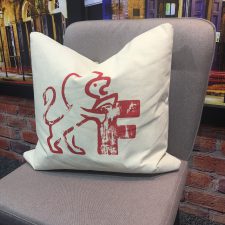It’s nearly impossible to work in the print industry and not have heard about the expanding interest in digital textiles. Although digitally printed fabrics make up only 2% of the entire textile marketing, it’s a fast-growing technology. It’s expected to grow from a $14.2 billion industry in 2016 to a $33.4 billion industry by 2021, according to Keypoint Intelligence.
That’s more than doubling the opportunity in five short years. And it could grow even more, with big players like Amazon and Home Depot both entering the textile game in 2018.
As a print service provider, what does that mean to you? More material options with ever-advancing technology, more solutions to offer to your customers and more ways to grow your business. Here are four key points to know now about digitally printed fabric in the wide-format market.



